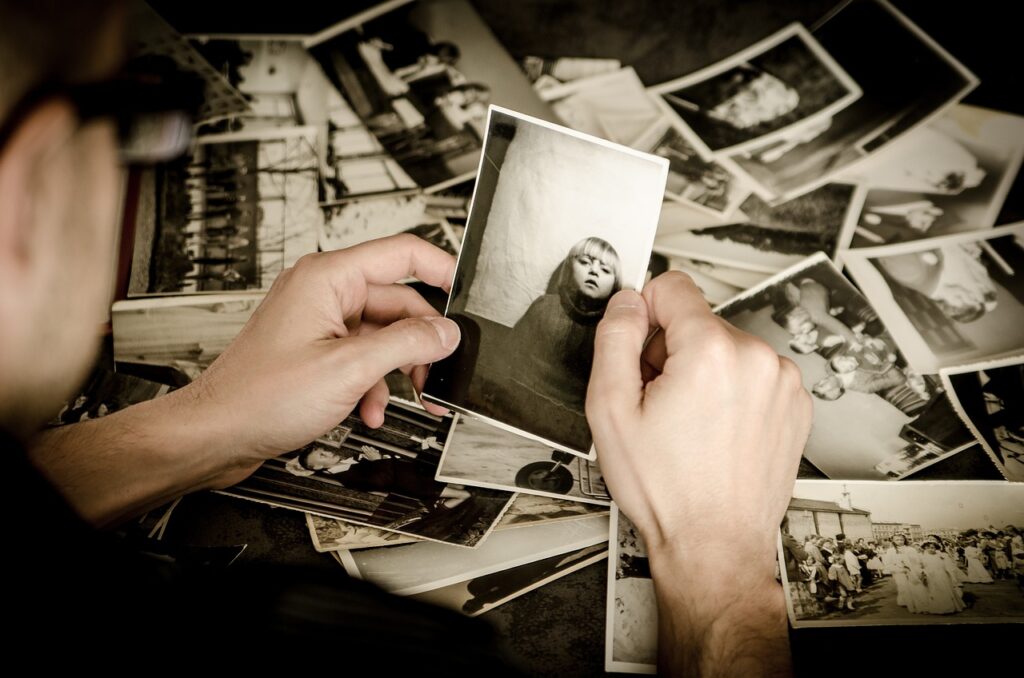Memory
Our brains are inside our skulls so the only way to learn about the world is to make sense of all the information coming in through our senses and to process, categorise and store it by strengthening connections between neurons. That information is then used by your brain to make predictions that can guide future behaviour. We start off as purely sensory beings but once we develop language, that tends to come to the forefront of our experience. We are mostly driven by unconscious processes as it would be impossible to be conscious of all experience all of the time. The ability to consciously recall and reflect on past information is thought to be relatively unique to humans. Our brains and our learning experiences are unique to us as individuals but we share a common experience of the world.
There are three major processes involved in memory:
- Encoding.
- Storage.
- Retrieval.
For new memories to be formed, information coming in must be changed into a form which can be used. This happens through the process known as encoding. When information has been successfully encoded, it is stored in the memory to be used later. A large amount of this stored memory is outside of our awareness most of the time, until we actually need to use it. The process of retrieval enables us to bring these stored memories into our conscious awareness.

The Multi Store Model of Memory
There are many different models of memory. The Multi Store Model of Memory is frequently used to explain the basic form and function of memory. It was created in 1968 by Atkinson and Shiffrin. It describes three separate stages of memory.
Sensory memory
Sensory memory is the first stage of memory. During this stage, sensory information from the environment is stored for a very brief period of time, just a matter of seconds.
We attend to only certain aspects of this sensory memory, allowing some of this information to pass into the next stage, short-term memory.
Short-term memory
Short-term or active memory is the information we are currently aware of or thinking about. Paying attention to sensory memories generates the information in short-term memory. Most of the information stored in active memory is kept for approximately 20 to 30 seconds.
While many of our short-term memories are quickly forgotten, paying attention to this information allows it to continue to the next stage, the long-term memory.
Long-term memory
Long-term memory refers to the continuing storage of information. This information is largely outside of our awareness but can be called into our active memory to be used when needed. Some of this information is quite easy to recall, while other memories are much more difficult to access. Long-term memory can be broken into smaller groups, declarative memory and procedural memory.
Declarative memory consists of the knowledge that was acquired through language and education (like knowing that World War II ended in 1945), as well as knowledge learned through personal experiences (remembering where I lived as a child). Procedural memory refers to learning though routines (learning how to drive or ride a bike). Other types of memory are auditory memory, contextual memory, naming, and recognition.
The Organisation of Memory
The ability to access and retrieve information from long-term memory allows us to actually use these memories to make decisions, interact with others, and solve problems. The specific way information is organised in long-term memory is not well understood, but researchers do know that these memories are arranged in groups or clusters. Grouping or clustering is used to organise related information into groups. Information that is categorised becomes easier to remember and recall. Memories are distributed throughout the neocortex rather than there being one memory centre.
Other ways of considering memory are described below.
Explicit memory
A conscious, intentional recollection of factual information, previous experiences and concepts. There are two types, semantic and episodic memory.
Semantic memory
A conscious, intentional recollection of factual information, previous experiences and concepts.
Episodic memory
The autobiographical memory of an event or experience, including the who, what and where.
Implicit memory
A recollection acquired and used unconsciously that can affect thoughts and behaviours.
Emotional memory
Feeling the same physiological response that you associate with a past experience.
Procedural memory
The memory of how to perform a common task without actively thinking about it.
Consider more:
u003culu003ern tu003cliu003eHow good do you think your memory is?u003c/liu003ern tu003cliu003eDo you use any techniques to help you remember important information?u003c/liu003ernu003c/ulu003e